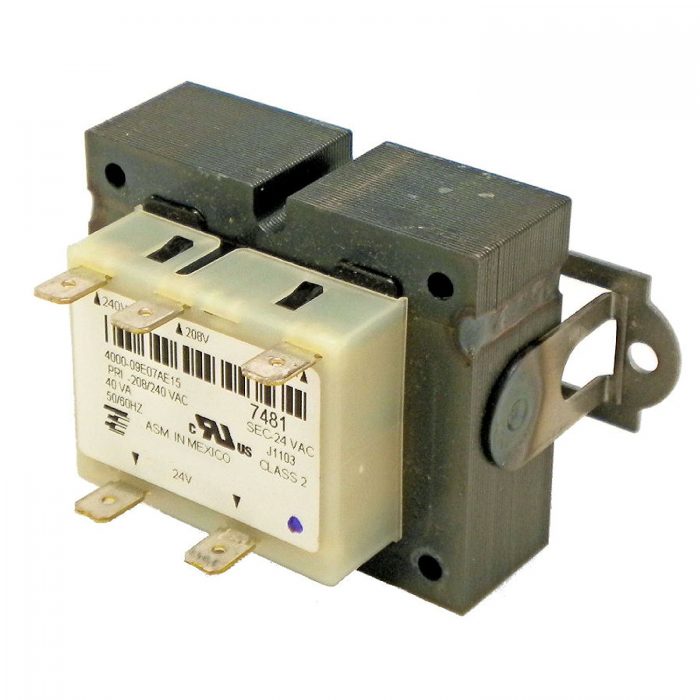Get Tech Tips
Subscribe to free tech tips.
Multi Tap Primary Transformers

Have you ever seen a low-voltage transformer like the one shown above? It has multiple input (primary) taps for a good reason.
It is common to find three-phase and single-phase equipment rated to operate on both 240v and 208v power. That is because three-phase power can either be 208v leg to leg when the building has a wye-type transformer or 240v leg to leg when a delta transformer is in use.
Single-phase power (in the US) is almost always 240v leg to leg or 120v leg to neutral because one “phase” of the three-phase transmission line is being used. It is wired in the transformer secondary to create two opposite sine wave (180 degrees out of phase) legs of 120v power. (We've written a detailed article about the voltage differences in single and three-phase power here.)
The motors in a unit rated for 208v or 240v must all be designed to operate within that range of voltages. However, if the transformer is designed for 240v, but only 208v power is applied, the secondary voltage will also drop below the rating. This can lead to issues with the controls, such as chattering relays and contractors. In most cases, the system will function normally, but in cases with long runs of control wire (high voltage drop) or sensitive electronic controls, it can have a greater impact.
When starting up or servicing a system with a multitap primary transformer, all you need to do is to ensure that the primary conductors are on the correct taps. If you ever find a system where the control voltage is higher or lower than expected by about 10%, you will want to check for an improperly tapped transformer.
—Bryan











Comments
I wish you had fleshed out this topic, as there are a couple of additional well worth covering. I would suggest covering transformers that can take any of these as primary voltages: 120, 208, 240, and 277.
Since some transformers may not have fast-on tabs, but instead have a designated wire for each winding tap, also mention that each unused wire must be capped off individually, either by cutting off any pre-stripped end and taping it, or using a suitably small wire-nut that will stay on each single conductor. Even if you are feeding 120V in, that tapped primary is an auto-transformer, and the 277 V wire will have 277 volts on it measured from the port in use at the other end of that winding. Every wire will be at a different voltage and twisting a wire-nut over any 2 unused wire will be a short that is apt to smoke your transformer unless you have added a suitably small fuse in series with one of the two supply wires.
One last point might be to warn against accidentally using the “wild phase” if you are on a 3 phase 240V delta with a center tapped and grounded neutral between the other two phase legs that provides what looks like a normal single phase 120/240 supply, and you are trying to use a 120 volt primary on your control transformer.
I wish you had fleshed out this topic, as there are a couple of additional well worth covering. I would suggest covering transformers that can take any of these as primary voltages: 120, 208, 240, and 277.
Since some transformers may not have fast-on tabs, but instead have a designated wire for each winding tap, also mention that each unused wire must be capped off individually, either by cutting off any pre-stripped end and taping it, or using a suitably small wire-nut that will stay on each single conductor. Even if you are feeding 120V in, that tapped primary is an auto-transformer, and the 277 V wire will have 277 volts on it measured from the port in use at the other end of that winding. Every wire will be at a different voltage and twisting a wire-nut over any 2 unused wire will be a short that is apt to smoke your transformer unless you have added a suitably small fuse in series with one of the two supply wires.
One last point might be to warn against accidentally using the “wild phase” if you are on a 3 phase 240V delta with a center tapped and grounded neutral between the other two phase legs that provides what looks like a normal single phase 120/240 supply, and you are trying to use a 120 volt primary on your control transformer.
To leave a comment, you need to log in.
Log In